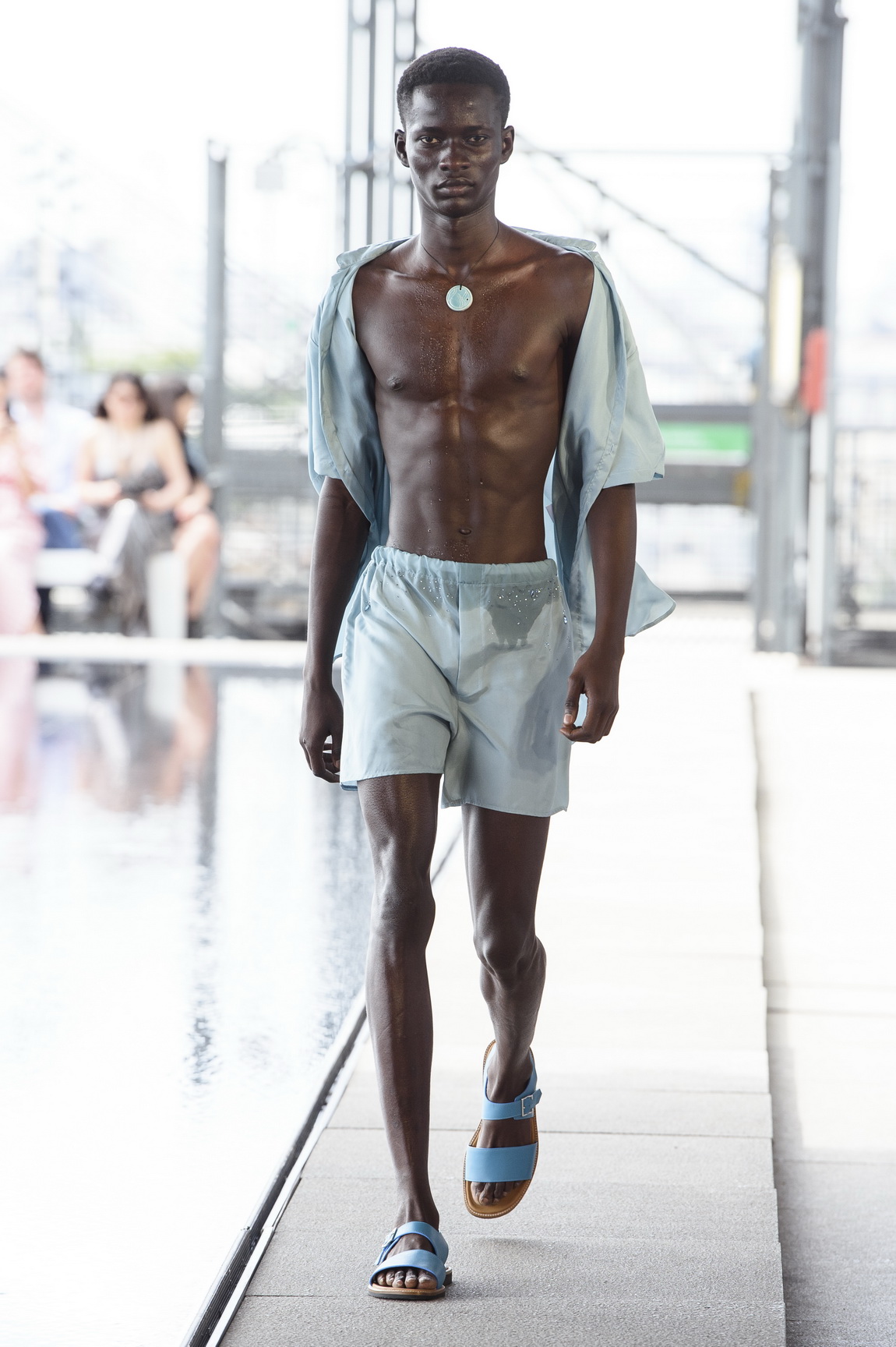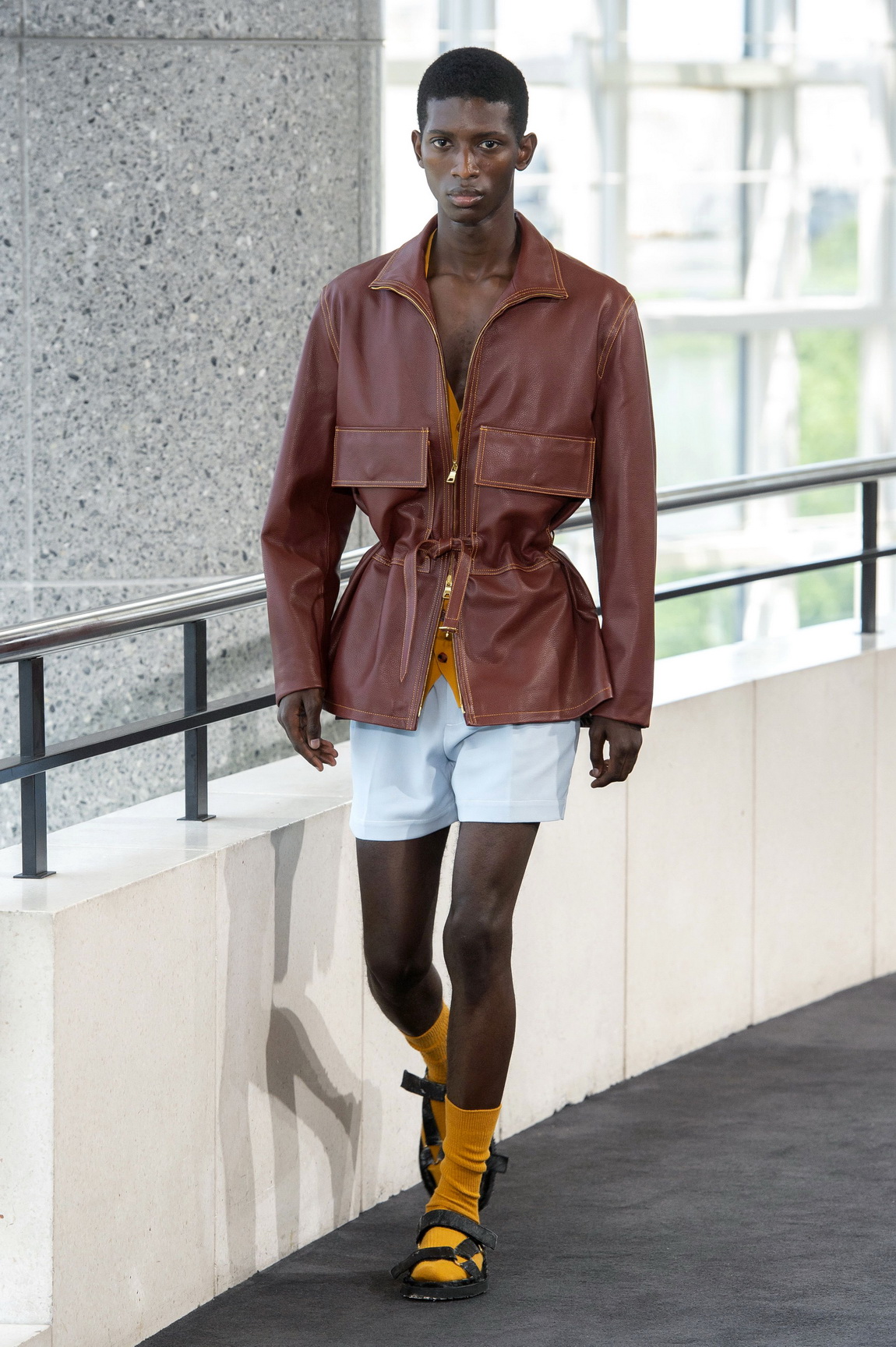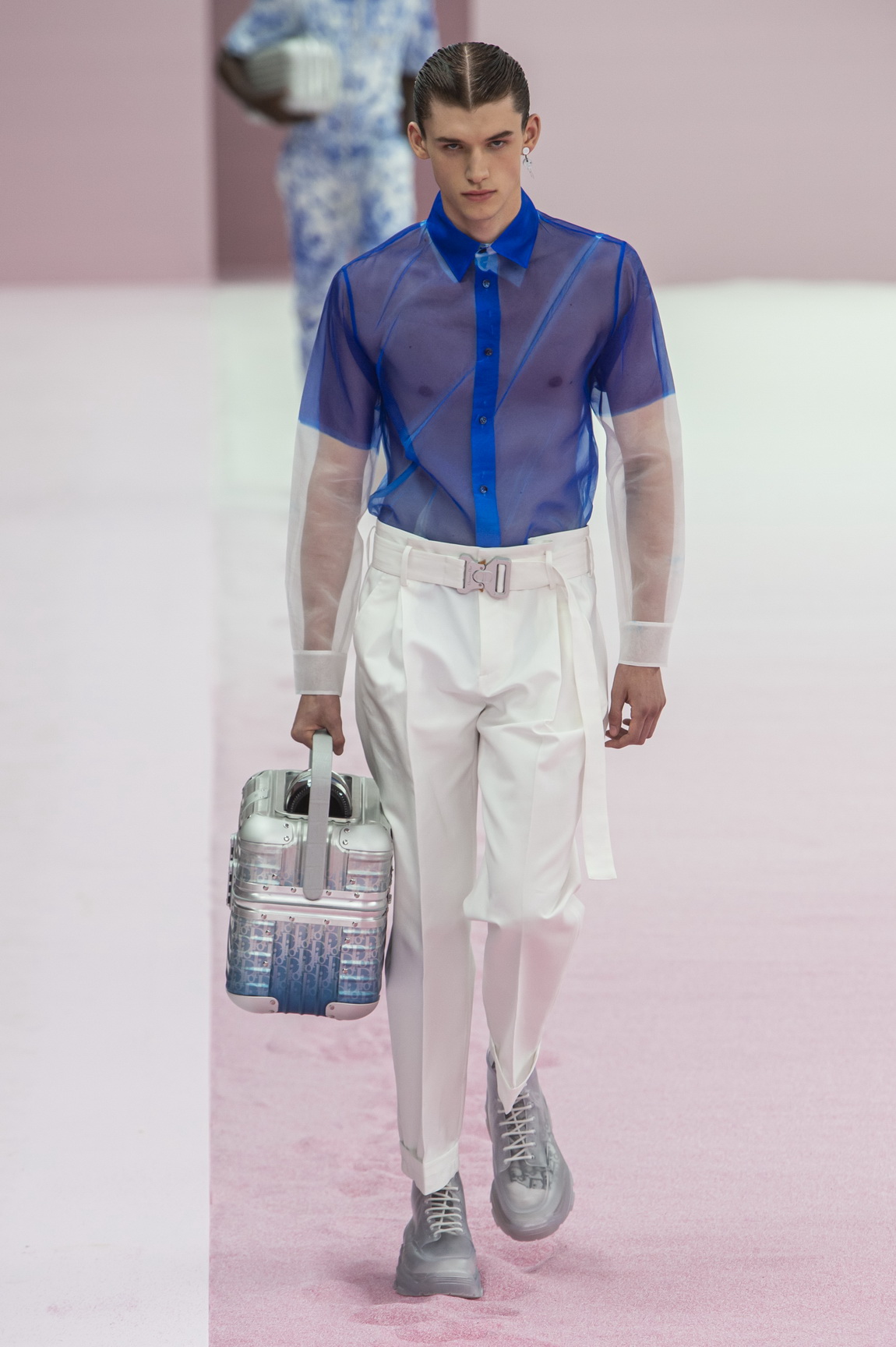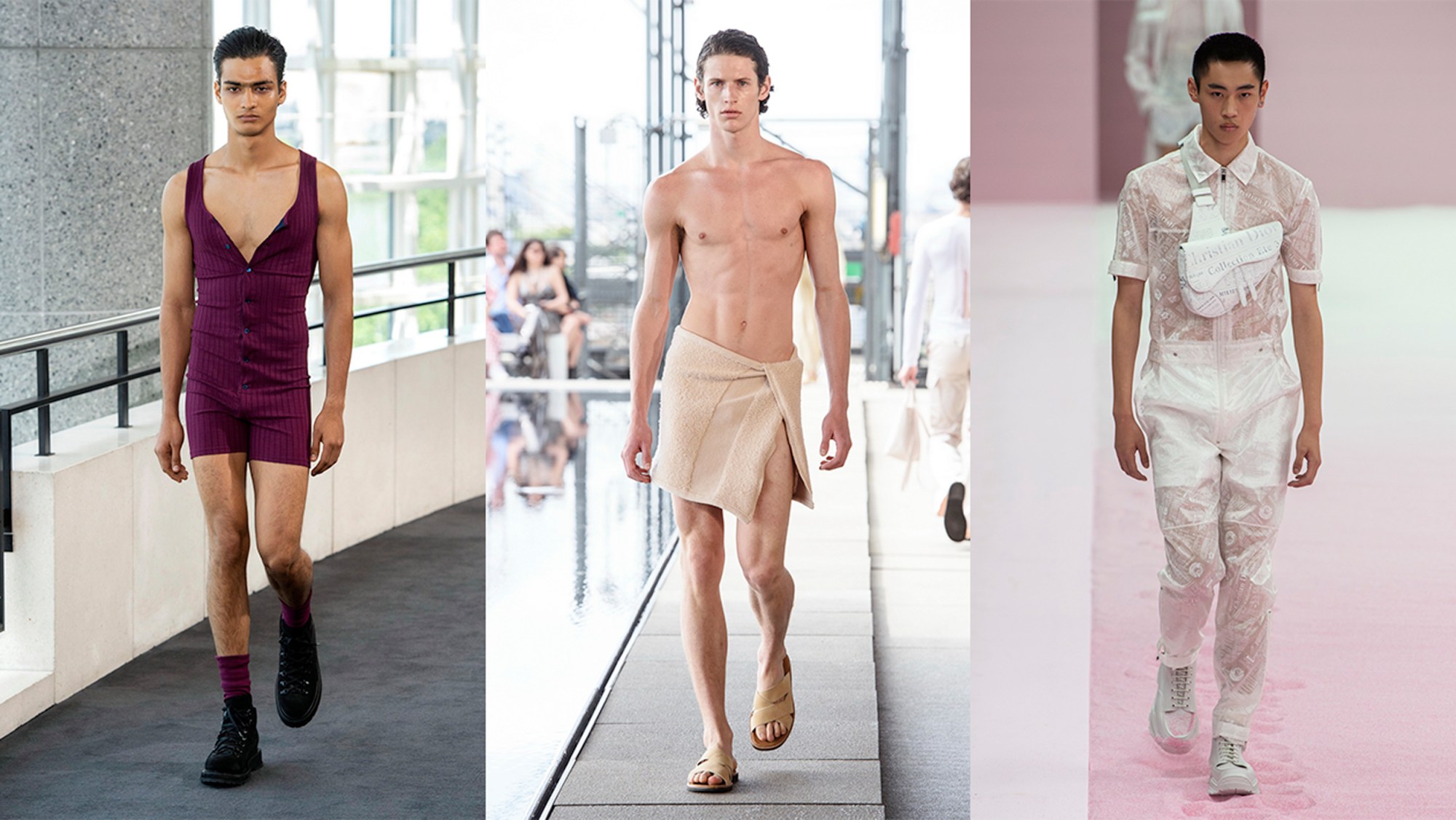The knowledge that sex sells is as old as the hills, and there are few industries where its force is felt as strongly as in fashion. Whether by revealing or concealing the body’s natural architecture, designers have always been in pursuit of sexiness, making it a perennial trend of the last 100 years. That doesn’t, however, mean that the ways in which it has manifested have been constant. Over the course of fashion history, designers have reacted to, and in many cases influenced, the social and political frameworks of sexiness of their respective times. Today, with gender identities and expectations crumbling quicker than ever, the idea of what makes a man sexy has never been more fluid. In Paris last month, designers took a stand against the monopoly of broad-chested, sporty silhouettes, offering svelte proposals on how next summer’s man could look.
At Ludovic de Saint Sernin’s spring/summer 20 poolside show, an already-sweltering Paris became a full on sauna with a steamy yet fragile take on tomorrow’s man. Having made a name for impossibly skimpy ‘eyelet’ briefs, leathers, ribbed knits, and hand-crocheted male thongs, it came as no surprise that the designer chose to put his raunchiest foot forward. The look that best encapsulated this was, of course, the now-viral towel-skirt, which left little to the imagination. But it was the delicacy of that raunchiness seen in other looks that took viewers’ breath away. An expertly tailored two-piece suit in sheer white organza was dampened, causing the fabric to cling to models’ torsos. Pieces like the skin-tight tops with trompe l’œil sweat patches, crafted from overlapping layers of increasingly sparse knits went even further, as if to offer a subversive male take on Carine Roitfeld‘s maxim that “To be French is to be sexy without showing anything”. Ludovic’s sexiness relies on a careful game of Tom Ford-at-Gucci-era hide-and-seek — a balance of knowing exactly how much to give away and how much to hide.

Following with a similar dose of soft raunch was Sies Marjan, who made a double debut, both showing on the Paris schedule, and presenting their first full menswear collection. Compared to Ludovic’s steambath, however, creative director Sander Lak’s Paris outing offered a slower simmer, the nude male body’s vulnerable glory implied rather than put on brazen display.
The most subversive moments of his show came in the subtle undoings of garments and silhouettes one might otherwise have associated with a typically macho sexiness. Baby pink button-down shirts had white and blue stripes, giving a subtle nod to the vernacular of city boy suiting, with the similarities ending there — the traditional collar subbed-out for a bateau-neck, the top two buttons undone to offer a flash of chest. Mock-croc overcoats, cinched tight at the waist, yielded hourglass silhouettes. There was even a jean-blue satin shirt and trousers combo with light brown pocket stitching that almost fooled the eye into seeing double denim. The silken touch of the Sies Marjan softboy is nothing new; it is, after all, for his sultry dresses in richly-hued silks that the New York-based designer has earned his reputation.

At Dior, Kim Jones — a full year on from his appointment as the artistic director of menswear — adopted a similar approach, as far as integrating womenswear motifs into the collection was concerned. There were, however, certain restrictions that came into play. While brands like Sies Marjan and Ludovic de Saint Sernin are able to fully profit from their newness, creating bold new propositions with little need to heed the past, the task is a little trickier at Dior, where designers must work within the framework of the house’s codes. Consider now that it was only relatively recently that their menswear was known for catering to broad-shouldered masculine archetypes, specialising in perfectly tailored (if perfectly plain) suiting. Unlike his younger contenders, Mr Jones made no compromise in the severity of the cut. Instead, he chose to thread romantic motifs from Dior’s haute-couture savoir-faire — whether in the return of last season’s sweeping satin sash, this time rolling neatly over the lapel, or in the lily of the valley brooches, Monsieur Dior’s favourite flower. Elsewhere, the iconic toile de jouy print found its way onto jumpsuits and translucent shirting featured prominently.
It’s abundantly clear that a sea change has taken place in regards to how fashion views its ideal man. He is unafraid to experiment and draws strength from his ability to show a certain softness. But just how well will these delicate new proposals on new male sexiness translate to the streets? Will we be seeing sculpted softboys sauntering down Broadway Market in towel skirts and dropped shoulder shirts come July 2020? Fingers crossed, but it’s not something we’ll be hedging our bets on. But that doesn’t reduce the significance of these proposals. Just as with Monsieur Dior’s New Look or André Courrèges’s miniskirt, moves made on the runways can have wide-rippling effects on the way we present our bodies to the world. These softer takes on what makes a man hot might seem unfamiliar, or even intimidating to some, but as designers increasingly move away from pre-existing templates of male attractiveness — choosing instead to explore the uncharted horizons of how men can dress — the more normalised this soft new sexiness will become.

Credits
Photography Mitchell Sams


